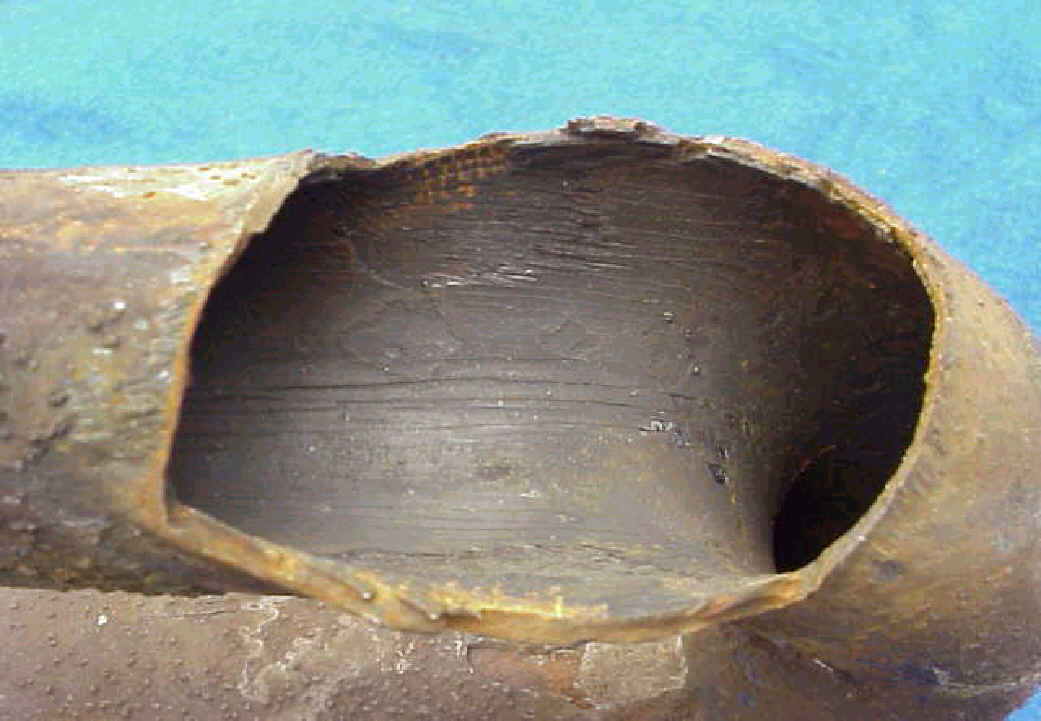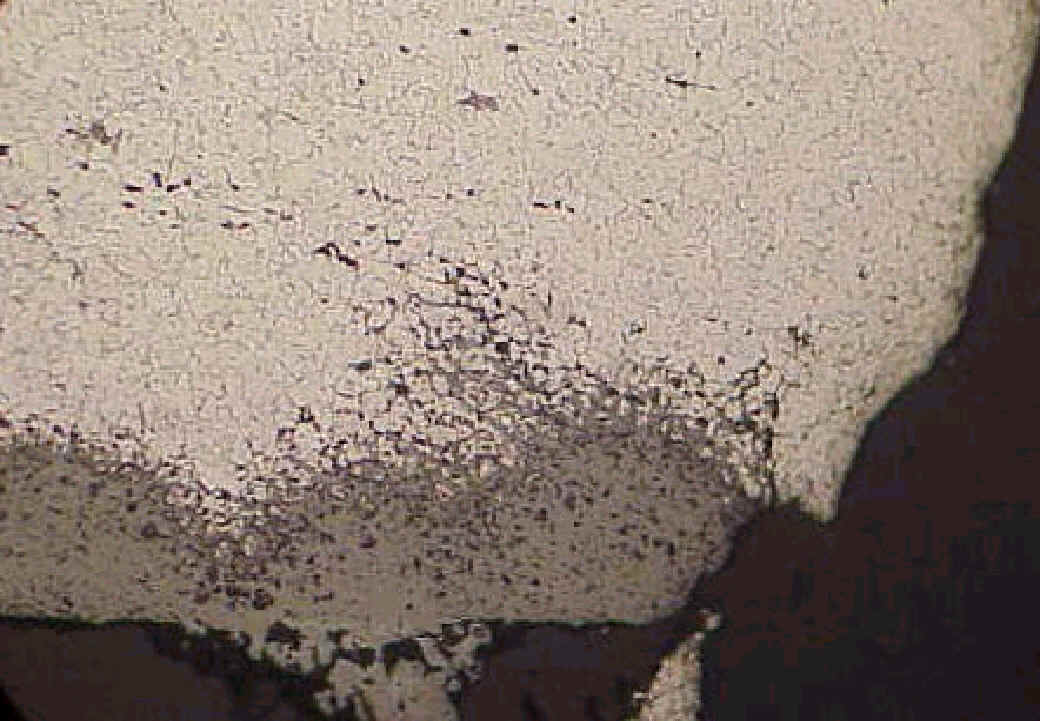|
Hydrogen attack
-
Both acid attack and
caustic attack of
steel initially causes the formation of atomic hydrogen.
Hydrogen damage may result . The atomic hydrogen diffuses
into the steel and reacts with iron carbide, with formation
of methane.
-
The pH can be controlled by means of
appropriate boiler water conditioning and daily testing of
the feedwater and boiler water composition, which will
prevent this form of corrosion.


Refer 5823
Hydrogen damage occurs in boilers
operating usually above (6.9 MPa) and under heavy deposits or
other areas where corrosion releases atomic hydrogen.
Concentrated sodium hydroxide beneath the deposits can remove
the protective magnetite film by the following reactions.
4NaOH + Fe3O4-
2NaFeO2 + Na2FeO2 + 2H2O
Concentrated sodium hydroxide can then
react with freshly exposed base metal to yield sodium ferroate
and atomic hydrogen:
Fe + 2NaOH - Na2
FeO2 + 2H
The hydrogen produced at the metal
surface can diffuse into the steel where it can combine to form
molecular hydrogen or react with iron carbide to form methane
and iron:
4H+ + Fe3C
- CH4 + 3Fe
Upsets in phosphate
treatment programs or residual acid from chemical cleanings can
also cause hydrogen damage, especially if the acids remain
trapped beneath the deposits.

These failures are typically characterized as thick-lipped,
brittle type ruptures.
Sometimes, thick-walled "windows" can be completely blown
out of the tube wall. Microstructural examination at the area of
failure typically reveals short discontinuous intergranular
cracks accompanied by decarburization. |



